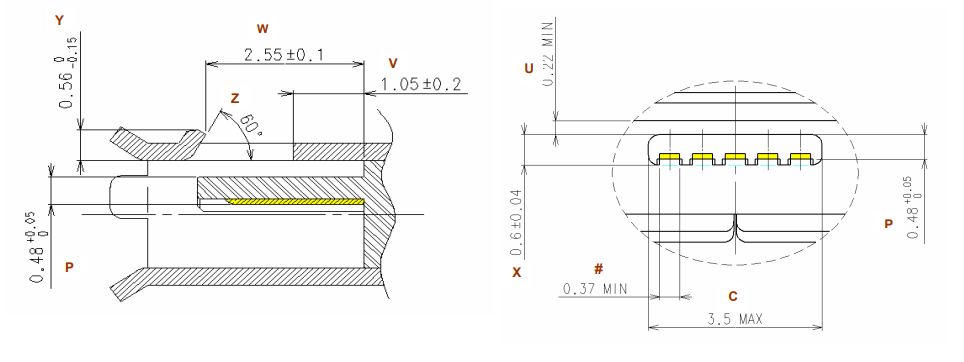
One of the main features of this project is the PCB USB connector that makes the interface between the business card and the computer.
As I said, I wanted a very thin card so the use the USB type A PCB connector was descarded (you need are least 2.4mm thickness for a good grip).
Another reason for not choosing the USB type A PCB connector is that this PCB connector was made simulating the USB type A plug, so you have to connect it directly to the PC, and this is not good for a gamepad, is really difficult to play videogames with a game pad with no cable. You can find one of those USB plug/USB receptacle cables, but those are not very common.
So I thought, what is the USB cable that we all have around? And the answer was the USB to micro USB cable.
I searched for the specification of the USB micro B cables and connectors to look at the dimensions of the connectors, and find a way to create a PCB micro USB connector.
One of the restrictions of the PCB connector is that the thickness of the PCB has to be one of the commonly used thickness: 0.6mm, 0.8mm, 1mm, 1.2mm, 1.6mm, 2mm.
To my surprise the mid plate of the USB micro B is around 0.6 mm (the majority of the cheap PCB manufacturers can do 0.6mm PCBs, with little or no extra cost), the contacts are a bit below the surface but the other side of the connector is spring loaded, so you can have a a bit of slack. Copying the pads pattern of the mid plate was all i needed to create a footprint in Eagle.

For getting extra points I also investigated about the "new" USB type C, and looking at the specification it also uses a mid plate of around 0.6mm thickness. It has much more pads and unlike the micro B, it can be used either way. So i created another top and bottom layer footprint for the USB C connector.

I put together those footprints with some variations and even a USB type C connector USB 2.0 compatible in a single Eagle library.
Those types of connector are not bullet proof, obviosuly it can not be used for a lot of pulgs and unplugs and the fit is not 100% perfect. But if you have a project that needs a USB connector, and you don't mind to use a 0.6 mm thickness PCB, you can use it and have a free, low profile connector.
Discussions
Become a Hackaday.io Member
Create an account to leave a comment. Already have an account? Log In.
This is great, thank you for sharing! I'm sure it will come in handy for me.
Are you sure? yes | no